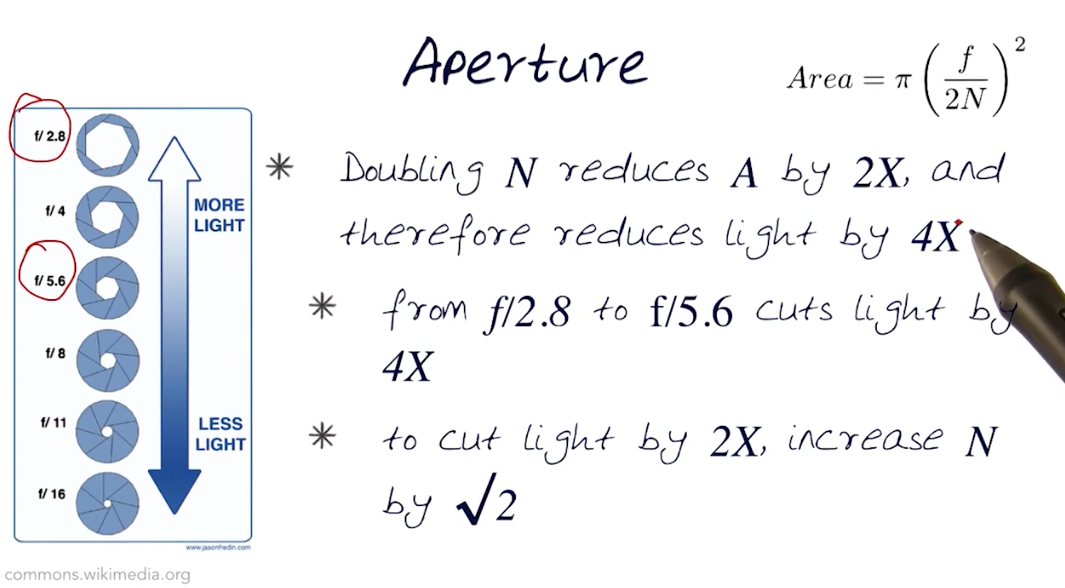# Camera
Want to capture
- Geometry (perspective)
- Light (scattering)
- Color
# Pinhole photograph
- No distortion - straight lines remain straight
- Inifinite depth of field, everything in focus
- Larger pinhole - Geometric blur
- Small pinhole - diffraction blur
- Best pinhole - very little light
- Smaller pinhole (aperture) means more diffraction
# Lenses

- Longer the focal length, larger the image is formed, zoomed in
- Focusing is done by moving the sensor or lens back or forth in relationship to each other to ensure image is formed at the focal point. The blurriness due to bad focus is a result of sensor not being at the exact focal point.
- Changing focal length allows us to move back and still capture the scene closely
- Changing viewpoint cause perspective changes
- lower f number means longer lense

# Exposure Control
Exposure triangle is formed by controlling the following three elements
- Aperture (size of opening that lets light in / Pinhole size)
- Shutter speed
- ISO (light sensitivity)
# Exposure
- Exposure (H) = Irradiance (E) x Time (T)
- Since Irradiance is the amount of light falling on a unit area of sensor per second, it depends on the aperture size. Hence, larger the aperture, larger the exposure.
# Shutter Speed
- Doubling T doubles H
- Doubling T doubles motion blur
# Aperture
- Area =
(using the formula to calculate to area of circle ) - f is the focal length and N is the aperture number, usually written (f/N)
- Aperture number gives irradiance irrespective of the lens we use
- Larger aperture means more light, but remember f/1.8 is considered larger than f/2.8 since the number is in denominator.
- Lowering by 1/f stop doubles H (as aperture opens more)
- Lowering by 2/f stops doubles depth of field
# ISO - Sensitivity to light
* Linear: 200 ISO needs half the light of 10O ISO.
* Doubling ISO needs half the light

# Sensors
# CCD (Charge Coupled Device)
- Charge-coupled device, a device for converting electrical charge, into a digital value.
- Pixels are represented by capacitors, which convert and store incoming photons as electron charges
# Bayer Filter
- Captures the intensity of different colors at each pixel above the photodiode layer
- Bayer to RGB Demosaicing refers to converting the raw input in Bayer Mosaic format to RGB
- Basically taking a 2x2 subset from the bayer filter which represents a pixel, and converting it into an RGB triple
- If the 2x2 subset has RGGB, then we take the R and B as is, but average of two Gs and get the value for a pixel
# CMOS
- Complementary metal oxide semiconductor
- Unlike photosites in CCD Bayer filter which are passive and don't work without an amplifier, CMOS have built in amplifiers and can do local processing
# Raw file format
- Contains minimally processed data from sensor
- Image encoded in a device-dependent colorspace
- Captures radiometric characteristics of the scene
- Like a photographic negative, has a wider dynamic range or color
